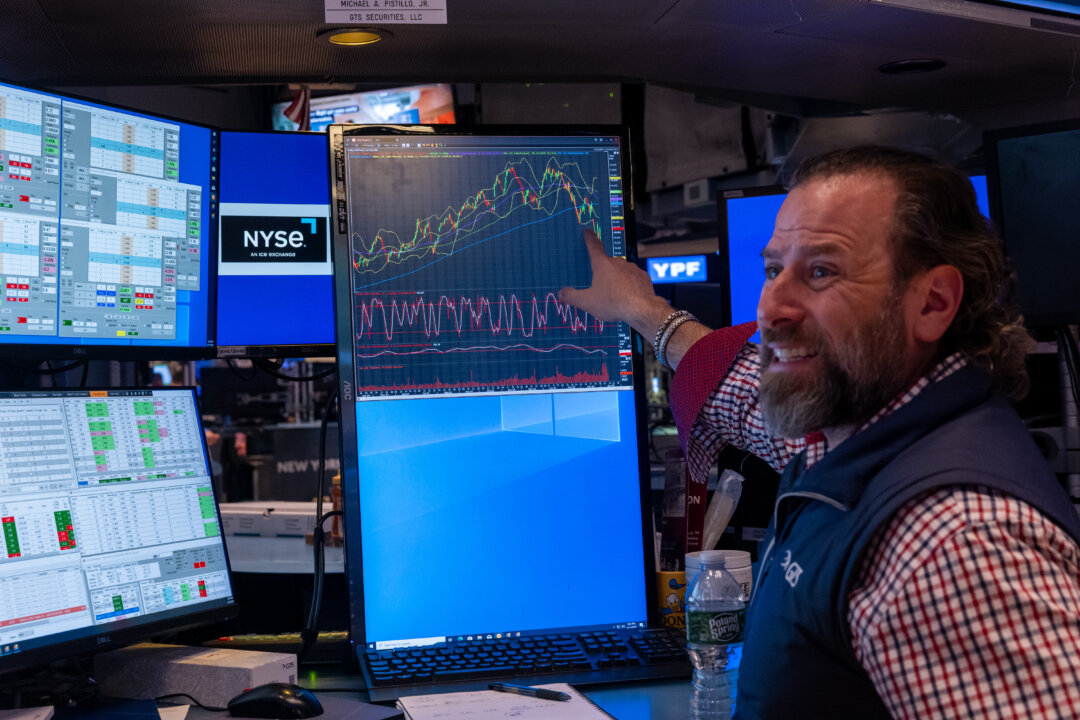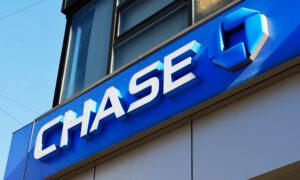High volatility in the market was driven by headlines from Washington and rising bond yields.
News Analysis
U.S. stocks continued their roller-coaster ride this week, driven by rising Treasury bond yields and media headlines that stirred investor sentiment. All major averages posted weekly gains, thanks to two strong rallies on April 9 and April 11, led by gold producers and Big Tech.
The S&P 500 index ended April 11 at 5,363, up 5.7 percent for the week; the Dow Jones Industrial Average advanced by 4.95 percent to close at 40,212; the Nasdaq jumped by 7.29 percent, ending the week at 16,724; and the small-cap Russell 2000 posted a moderate gain of 1.82 percent to finish at 1860.
Among the week’s top gainers were gold producers, with Newmont Corporation and Gold Fields, rising 24.42 percent and 23.17 percent, respectively, and Barrick Gold up 16.53 percent.
That was thanks to another jump in gold prices, which ended the week at $3,254, up slightly more than 8 percent.
The yellow metal has been on a steady rally recently, supported by a weak dollar and growing demand for safe-haven assets amid rising geopolitical uncertainty.
Another winning group of stocks was Big Tech, which rallied on bargain hunting and short-covering after steep sell-offs in the previous weeks made valuations more attractive. Nvidia, which led losses in the tech sector in the past two weeks, rallied 17.62 percent for the week, Broadcom up 24.37 percent, and Applied Materials up 14.17 percent.
The sizable gains came amid the high volatility in each trading session throughout the week, driven by headlines from Washington and rising bond yields.
Wall Street opened the new week with another sell-off, extending the sentiment that fueled the previous week’s two-day historic plunge, which pushed major equity indexes toward bear territory.
A wave of negative media headlines over the weekend added to the bearish investor sentiment at the opening of Monday’s trade, fueling a market capitulation and a “sell everything” mentality.
That, in turn, invited bargain hunters, helping major equity indexes briefly trade in positive territory. The Chicago Board Options Exchange Volatility Index dropped from close to 50 on Monday morning to around 42 at the closing.
“Mondays have a history of higher-than-normal volatility both on the downside and the upside,” James Demmert, chief investment officer at Main Street Research, told the Epoch Times.
“Volatility often comes after a period like last week when there is heightened uncertainty, fear, and significant, indiscriminate selling pressure. Often, over the weekend, ‘cooler heads’ prevail, which allows time for more careful analysis. This leads to realizing the value created by the recent selling pressure and an increased buyer appetite.”
On Tuesday afternoon, headlines of an escalating tariff battle with China and soaring Treasury bond yields added to investor concerns over the valuation of risky assets. The S&P 500 and the tech-heavy Nasdaq gave up early gains to close with losses of around 2 percent each.
Market volatility continued on Wednesday morning as the 10-year Treasury bond yield approached 5 percent, followed by a spike in the ICE BofA U.S. High Yield Index Option-Adjusted Spread (IHOS).
The IHOS is a financial metric that measures the yield difference between U.S. high-yield (or “junk”) corporate bonds and comparable U.S. Treasury securities. A widening spread is a sign of rising credit risks.

A photo of President Donald Trump sits on a desk on the floor of the New York Stock Exchange (NYSE) at the opening bell in New York City, on April 7, 2025. Timothy A. Clary/AFP via Getty Images
By early afternoon, another market reversal took hold as bond yields began heading south again, and news of a 90-day tariff pause hit the wires.
The Dow Jones gained 3,000 points or 7.8 percent, the S&P 500 rose 9.5 percent—the most since 2008—and the Nasdaq finished in double digits.
“Markets are breathing a loud sigh of relief after President Trump announced a 90-day pause on tariffs and a reduction of certain ones,” Chris Brigati, chief investment officer of SWBC, told The Epoch Times. “The market’s move upward is violent and speaks to how badly the market was looking for clarity on this issue. President Trump’s motivation to get trade counterparts to the negotiating table appears to bear fruit, which is a constructive development for the ongoing trade war.”
Market volatility returned on Thursday with a renewed sell-off fueled by the escalation of the tariff battle with China. The Dow Jones dropped more than 1,000 points, while the Nasdaq shed 4 percent.
“The stock market is taking a breather after Wednesday’s outlandish rally, as investors start to realize that even with the pause, a trade war with China is still happening, with very little clarity on the path ahead between the two nations,” Brave Eagle Wealth Management’s Chief Investment Officer Robert Ruggirello told The Epoch Times. “It is common to see a pullback after big up days. The market is trying to find its footing after a week of whiplash.”

Employees in the trading room of Nordea Markets in Oslo, Norway, on April 7, 2025. Ole Berg-Rusten/NTB/AFP via Getty Images
The market found its footing on Friday, with all major equity indexes rallying again on better-than-expected financial results from banking giant JPMorgan and better-than-expected wholesale inflation data.
Ruggirello sees opportunities for long-term investors amid the recent market volatility, particularly within many mega-cap tech names.
“If we see mega-cap tech pullback on [capital expenditures], that may be a positive, as investors just a few months ago were raising questions about big tech’s extreme spending on AI,” he said.










Leave feedback about this